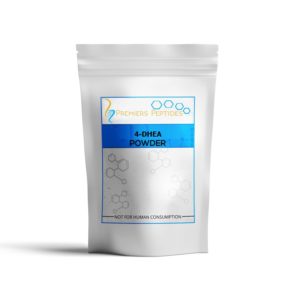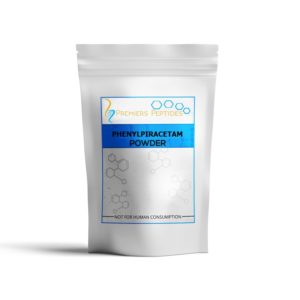Description
Buy OL-135 powder online
Was stored at −80°C in powder form, until approximately 60 min before behavioral testing. Three doses were prepared (0, 5.6, 10.0 mg/kg) with a vehicle consisting of 1:1:18 ethanol, cremophor, and saline. Drug administration occurred 30 minutes prior to training (Experiment 1) or immediately (within 5 min) after training (Experiment 2) via intraperitoneal (IP) injection. Buy OL-135 powder online
Conditioning was conducted in four Startfear chambers using their proprietary “Freezing” software using previously published methods, with the sensitivity adjusted for use in adult subjects. Briefly, on the first day (training) subjects were given five minutes of habitation followed by 10 pairings of a 10-s 67-db 4-kHz tone and a 2-s 0.3-mA shock. On the second day (context testing) subjects were transferred into the same conditioning chamber as the day before for five minutes during which freezing was assessed.
With OL-135, On the third day (auditory testing) subjects were transported into a new conditioning chamber with the opposite context. Freezing was assessed during a five-minute habituation period followed by 10 presentations of the auditory cue during which freezing was also assessed. In all cases, freezing was defined as a lack of relative cage movement below a fixed threshold for 0.5s. The threshold was determined in pilot studies by an investigator trained to recognize the freezing response. Percent freezing scores were calculated by comparing the time spent below the movement threshold with the total time for each event, including averaging over all 10 tones.
To ensure the effects of the drug were on fear conditioning and not antinociceptive effects, we also assessed reactivity to the aversive stimulus, both as a maximal value and as an average value. Between subjects one-way ANOVAs of drug dose on maximum and average shock reactivity found no significant differences. Buy OL-135 powder online
2.What’s the effect on OL-135 powder?
FAAH Inhibitor OL-135 disrupts the acquisition, but not consolidation, of contextual fear conditioning
Auditory fear conditioning and shock reactivity remain unaffected.
Together, these data suggest a specific role for endocannabinoids in a subset of fear conditioning paradigms.
3.Further instructions:
The reversible fatty acid amide hydrolase (FAAH) inhibitor OL-135 reversed mechanical allodynia in rat spinal nerve ligation (SNL) and mild thermal injury (MTI) models. Destruction of the degradative enzyme fatty acid amide hydrolase (FAAH) enhances endogenous signaling and can produce similar efficacy without side effects. The current study investigated the effect of low-dose (5.6 mg / kg) or medium-dose (10.0 mg / kg) doses of OL-135 (a FAAH inhibitor) on the acquisition and consolidation of classic fear conditioning, which is a Common trauma-induced anxiety model. Both doses of OL-135 destroyed contextual but non-audible fear conditioning. Impact reactivity is not affected. Because of the additional neural circuitry required by the context, but not auditory, fear conditioning, these data suggest that endocannabinoid signaling outside of the amygdala may be crucial for a portion of fearful memory.
High concentrations of anandamide brain tissue (350 pmol g(-1) tissue) and 60 pmol g(-1) vehicle-treated controls were found in the brain of rats given OL-135 (20 mg kg(-1)) ip . 15 minutes before the intraperitoneal injection of 20 mg / kg (-1). Cannabinoids. 3 Brain FAAH was protected from irreversible inactivation with OL-135 prevented rats (2-60 mg kg(-1) i.p.) 30 minutes before administration of an irreversible FAAH inhibitor (URB597: 0.3 mg kg(-1) intracardiac). The level of protection of the enzyme is related to the concentration of OL-135 in the same brain. At 30 min after dosing, 4OL135 (100 mg kg(-1) ip) reduced MTI-induced maximum allodynia (MPE) mechanical allodynia in FATI (+/+) mice (measured in von Frey filaments). 50%, but no effect in FAAH(-/-) mice. 5 OL-135 administered i.p. resulted in a dose-response reversal of mechanical allodynia between ED(50) between 6 and 9 mg kg(-1) in the MTI and SNL models.
The plasma concentration of ED(50) in both models was 0.7 microM (240 ng ml(-1)). In the rat SNL model, co-administration of the selective CB(2) receptor antagonist SR144528 (5 mg kg(-1) ip) with 20 mg/kg OL-135 blocked OL-135 induced mechanical allodynia inversion However, the selective CB (1) antagonist SR141716A (5 mg / kg (ip)) was ineffective. In the rat MTI model, the combination of two antagonists, SR141716A or SR144528 (both given 5 mg kg(-1) intraperitoneally) or in combination with OL-135 (20 mg/kg), was blocked after 30 minutes of assessment Reversal dose of mechanical allodynia. 8In the rat MTI model and SNL model, naloxone (1 mg kg(-1), intraperitoneal injection 30 min after OL-135) can reverse analgesia (15% of the control level in the MTI model, with zero SNL). OL 135 offers.
4. OL-135 powder Dosage:
Min order 10 grams.
The inquiry on normal quantity (Within 1kg) can be sent out in 12 hours after payment.
For larger order (Within 1kg) can be sent out in 3 working days after payment.
5. OL-135 powder Recipes:
To inquiry our Customer Representitive (CSR) for details, for your reference.
6. Marketing:
To be provided in the coming future.





